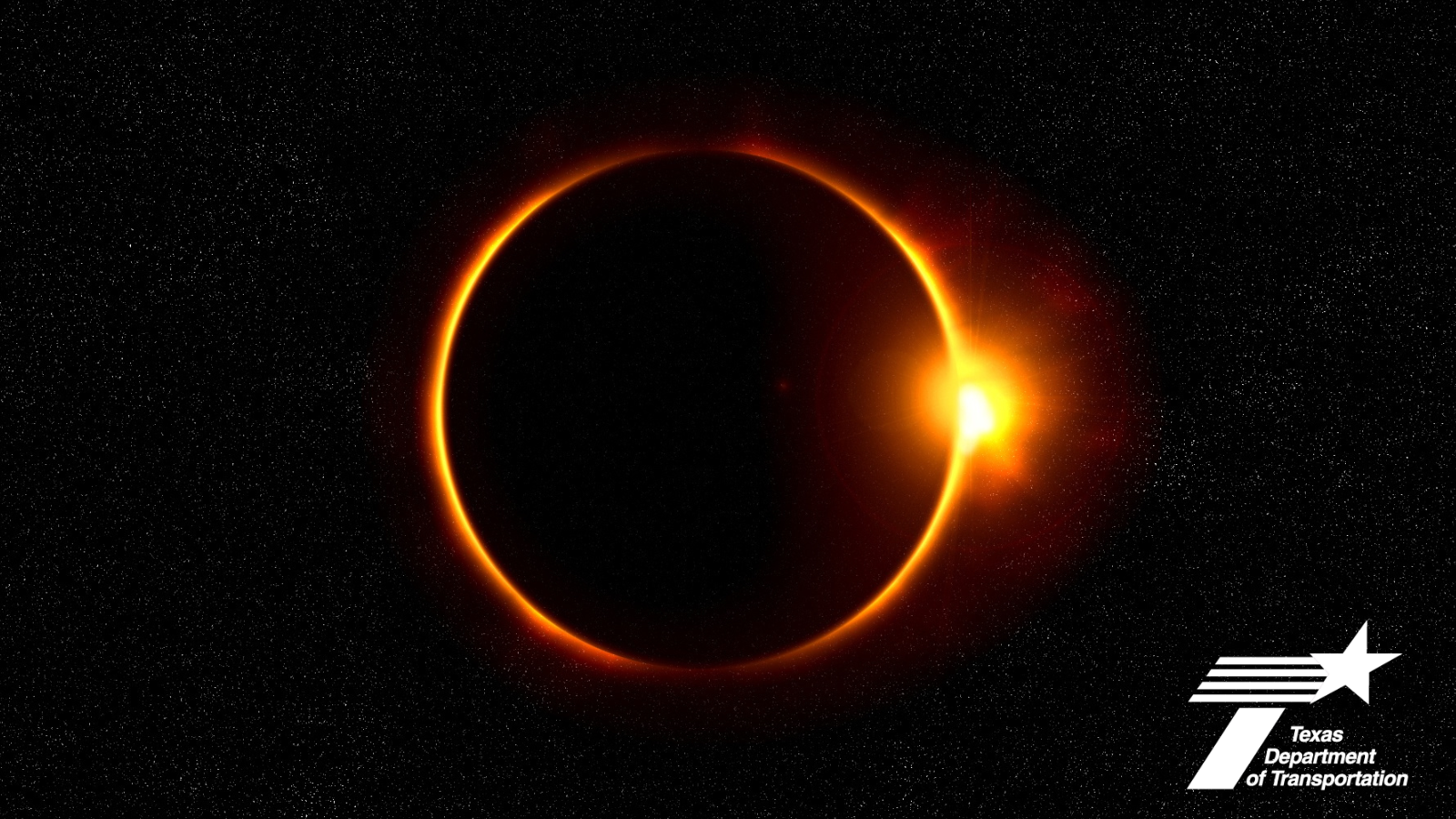
By Laura Butterbrodt
Texas is lucky to be the only state to have both Saturday’s annular eclipse and next April’s total eclipse visible in our skies. But when we aren’t looking up at the eclipse, we’ll be taking extra care to watch out for safety in our great state.
As people gear up for prime viewing of the eclipse, they should also prepare for busier-than-normal traffic on roads, especially on rural roads less accustomed to heavy travel. Many eclipse viewers from across the state and out-of-state will be traveling to the eclipse’s centerline for the best chance of seeing the solar event. Rural areas may see up to a 200% increase in people around the astronomical event. Drivers should fuel up on gas, snacks and water ahead of time and leave early in case of delays.
Matthew Heinze, TxDOT emergency management coordinator, said planning for the eclipses has been underway for about a year. The October annular eclipse will help emergency managers prepare for next April’s total eclipse, which is expected to draw even larger crowds to its path.
“Human behavior will be the greatest thing that we learn from this fall,” Heinze said. “Much like a major weather event, we know the path, timing and duration, but we don’t know how many people will be on the road or how they will act.”
Oct. 14’s annular eclipse is called a “ring of fire” because of the glowing red circle that will appear from the sun behind the moon. The eclipse’s centerline, or path that the ring of fire will be visible in, is about 125 miles wide and 500 miles long with 53 Texas counties in its path.
The eclipse’s duration will last about three hours in total, but the full annular eclipse will only last about five minutes -- beginning at 11:41 a.m. Saturday near Midland and Odessa. Its visibility will move to the southeast, reaching San Antonio at 11:52 a.m. and Corpus Christi at 11:55 a.m. Annularity will last for just under five minutes in most locations along the centerline.
A partial eclipse will be visible throughout Texas from about 10:15 a.m. to 1:40 p.m. Central Time, depending on where you are in the state.
It's important that drivers pull over in a safe, designated parking space before the eclipse if they want to view it. Parking or standing on road shoulders, medians or stopping in the middle of the road will not be permitted.
In addition to traffic safety concerns, parking and gathering on the side of the road in tall, dry grasses carries extreme risk for wildfires. To help mitigate this risk, TxDOT has moved our winter mowing cycles ahead by a few weeks. However, people are still advised to take extreme caution to prevent fires from igniting.
While we encourage both Texans and out-of-state visitors to take part in enjoying the opportunity to view the eclipse this weekend and next spring, we ask that you please take part in safe and respectful behaviors:
- Clean up after yourself. Don’t mess with Texas means don’t litter.
- Prepare yourself: mentally, for busier-than-normal roads; and physically, by fueling up your car and leaving early for your destination.
- Park only in safe, designated areas – NOT on road shoulders, medians or tall grass.
- Don’t stop in the middle of the road. Find a parking spot before the eclipse begins.
- Wear protective eyewear when viewing the eclipse. Do not look directly at the sun without proper eye protection.
Texans should also be aware that the April 8, 2024, total eclipse is anticipated to bring even higher volumes of viewers from all over the world. The path of the total eclipse will move northeast from Eagle Pass to Texarkana. The San Antonio and Texas Hill Country area will once again be in the centerline of the eclipse next spring.